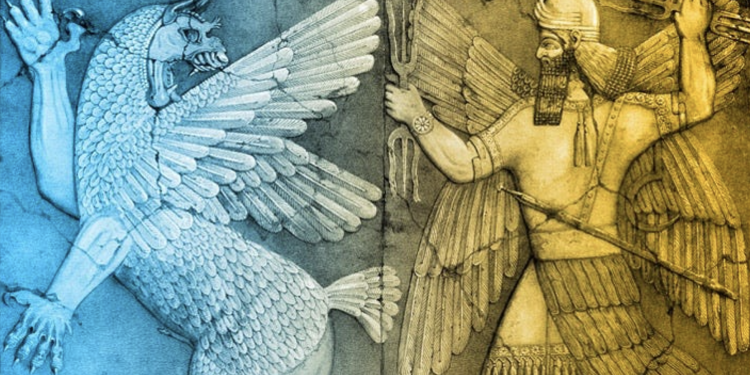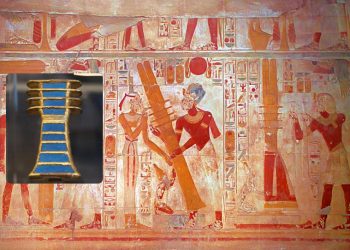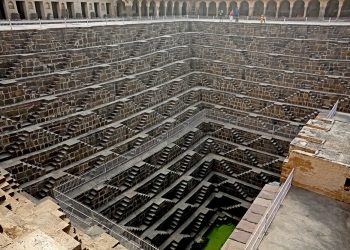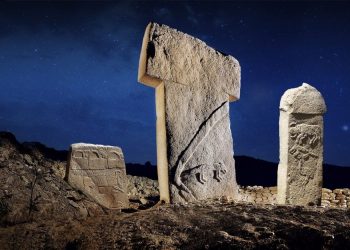Myths and legends have long captivated the human imagination, providing insight into the beliefs and values of ancient civilizations. Surprisingly, many cultures from around the world, despite being geographically isolated from one another, have created strikingly similar myths.
In this article, we’ll explore ten strikingly similar ancient myths, delving deeper into their stories and discussing whether these similarities are mere coincidences or suggest a deeper connection.
-
Creation Myths: Sumerians and the Maya
The Sumerian creation myth, the Enuma Elish, tells of the god Marduk slaying the chaos monster Tiamat and creating the Earth and heavens from her body. Similarly, the Maya creation story, the Popol Vuh, describes the gods creating the world out of the primordial sea. In both stories, the gods engage in a cosmic battle to bring order to chaos and create the world as we know it. Despite their distinct cultural origins, the similarities between these two myths raise questions about the universality of creation stories and the archetypes that shape them.
-
Flood Myths: Ancient Greece and India
The flood myth is one of the most widespread stories in world mythology. In both ancient Greek and Indian myths, a great flood wipes out humanity, with a few survivors repopulating the Earth. In Greek mythology, Zeus sends a flood to destroy the wicked human race, but Deucalion and Pyrrha survive by building an ark. Similarly, in Indian mythology, the god Vishnu warns the virtuous Manu of an impending deluge, allowing him to build a ship and save the seeds of life. The prevalence of flood myths across cultures suggests a shared human preoccupation with catastrophic events and the potential for renewal in the aftermath.
-
Sun and Moon Deities: Egypt and Japan
Both ancient Egyptian and Japanese cultures have sun goddesses and moon gods. In Egypt, the sun goddess is Hathor, who travels across the sky in a boat, bringing light and life. In Japan, Amaterasu is the sun goddess who illuminates the world and imparts wisdom. Conversely, the Egyptian moon god, Thoth, is associated with wisdom, knowledge, and writing, while in Japan, Tsukuyomi is the god of the moon and night. The parallel roles and attributes of these deities in both cultures may reflect universal human experiences and observations of the celestial bodies.
-
Hero’s Journey: Gilgamesh and the Odyssey
The Epic of Gilgamesh from ancient Mesopotamia and Homer’s Odyssey from ancient Greece both follow a hero’s journey, where the protagonist embarks on a perilous quest and overcomes numerous obstacles before returning home, transformed. Gilgamesh seeks immortality and wisdom, while Odysseus endeavors to return to his homeland after the Trojan War. Both heroes encounter divine beings, monsters, and other challenges that test their courage, resourcefulness, and moral character. These epic narratives share a common structure and themes, revealing the archetypal nature of the hero’s journey across human cultures.
-
Underworld Journeys: Ancient Egypt and Greece
In both ancient Egyptian and Greek mythology, the afterlife is a realm beneath the Earth’s surface where souls journey after death. The Egyptian underworld, Duat, is a treacherous realm filled with obstacles and challenges that souls must overcome to reach eternal life. Osiris, the god of the dead, judges the souls and determines their fate. Similarly, the Greek underworld, Hades, is a realm of shadows and spirits, where the god Hades rules over the dead. The myth of Orpheus and Eurydice highlights the perilous nature of the Greek underworld as Orpheus attempts to retrieve his beloved Eurydice from the realm of the dead. The shared concept of an underworld journey in these two ancient cultures highlights a common human fascination with the afterlife and the moral implications of our actions in the mortal world.
-
Twin Deities: Aztecs and Romans
The Aztecs of Mesoamerica and the ancient Romans both have myths involving twin deities. The Aztec gods Quetzalcoatl and Xolotl represent the duality of life and death, with Quetzalcoatl symbolizing light, knowledge, and creation, while Xolotl represents darkness, transformation, and regeneration. In Roman mythology, the story of Romulus and Remus tells of twin brothers who are raised by a she-wolf and eventually go on to found Rome. The theme of duality and the bond between twins in these myths suggest a universal human fascination with the balance of opposing forces and the potential for unity in diversity.
-
Sky Father and Earth Mother: Chinese and Native American
The Chinese and many Native American cultures have myths involving a primordial Sky Father and Earth Mother, who together create the world and give birth to gods and humans. In Chinese mythology, these figures are known as Fuxi and Nuwa, who mold humans from clay and bestow upon them knowledge and culture. In some Native American stories, Father Sky and Mother Earth are portrayed as complementary forces that bring forth life and maintain the balance of the natural world. These myths emphasize the interconnectedness of all living beings and the importance of harmony between the heavens and Earth.
-
Trickster Figures: Norse and West African
Trickster figures appear in both Norse and West African mythology. Loki, the trickster god in Norse mythology, is known for his cunning, shape-shifting, and mischievous deeds, often causing trouble for the gods and humans alike. In West African myths, Anansi the spider uses his intelligence and wit to outsmart other characters and achieve his goals, often teaching valuable lessons in the process. The universal appeal of trickster figures may lie in their ability to challenge established norms and reveal the complexity and ambiguity of the human experience.
-
World Tree: Norse and Mayan
The concept of a World Tree, connecting the heavens, Earth, and the underworld, is present in both Norse and Mayan mythology. In Norse mythology, the tree is called Yggdrasil, a gigantic ash tree that supports the cosmos and serves as a dwelling for various creatures. In Mayan mythology, the World Tree, known as the Wacah Chan, connects the celestial realms, the Earth, and the underworld, with its roots extending deep into the ground and its branches reaching into the sky. The World Tree symbolizes the interconnectedness of all realms of existence and the cyclical nature of life and death.
-
Serpent Symbolism: Hinduism and Australian Aboriginal
Serpent symbolism is prevalent in both Hindu and Australian Aboriginal mythology. In Hinduism, serpents are associated with the divine and represent the kundalini energy, a powerful life force that resides at the base of the spine and can be awakened through spiritual practices. The serpent god Shesha supports the universe and serves as the divine bed for the god Vishnu. In Australian Aboriginal mythology, the Rainbow Serpent is a powerful creation figure responsible for shaping the landscape, controlling the elements, and maintaining the balance between the natural and spiritual worlds. The recurring theme of serpents in these cultures may reflect the universal human fascination with these enigmatic creatures’ mysterious, transformative power.
What we learned
The similarities between the myths and legends of ancient civilizations from different corners of the world are striking and thought-provoking. While some of these parallels may be attributed to the universality of human experience and the shared archetypes that pervade the collective unconscious, others suggest the possibility of cultural exchange and interconnectedness throughout history. Ultimately, these shared myths highlight our common humanity and the timeless quest to understand our origins, purpose, and place in the cosmos. By examining the fascinating connections between these diverse cultures and their mythologies, we gain a deeper appreciation for the power of storytelling and the enduring human desire to make sense of the world around us.
PLEASE READ: Have something to add? Visit Curiosmos on Facebook. Join the discussion in our mobile Telegram group. Also, follow us on Google News. Interesting in history, mysteries, and more? Visit Ancient Library’s Telegram group and become part of an exclusive group.











